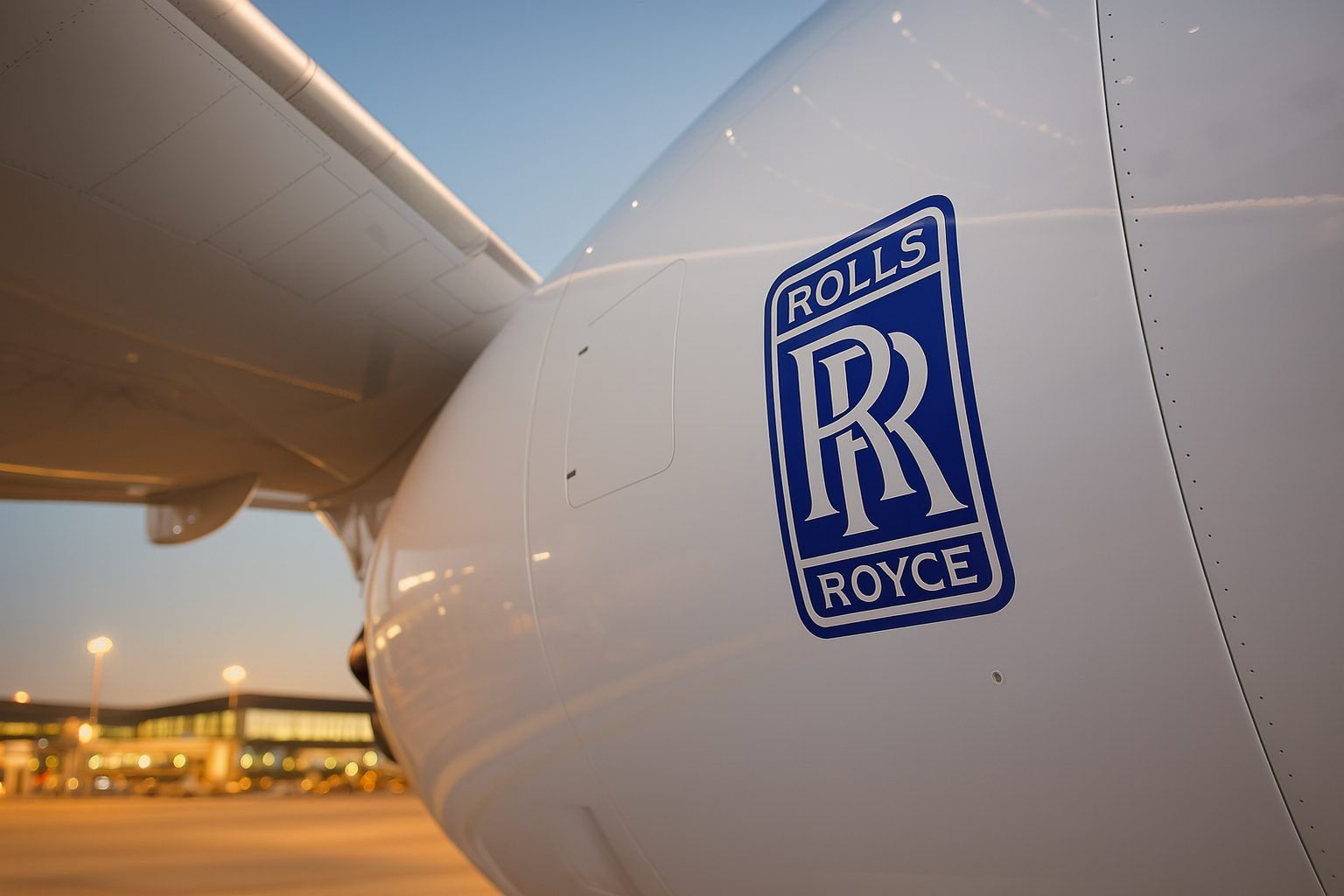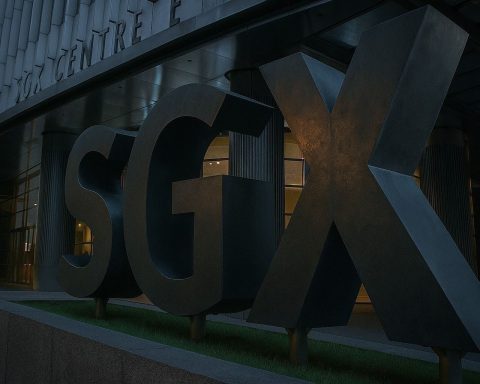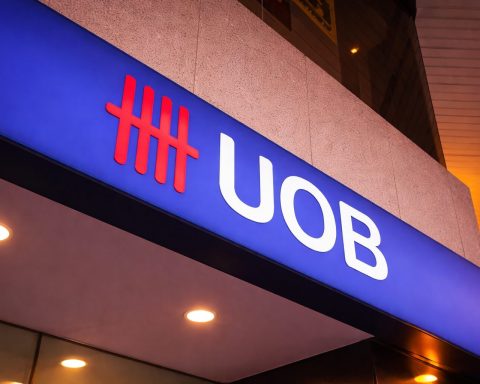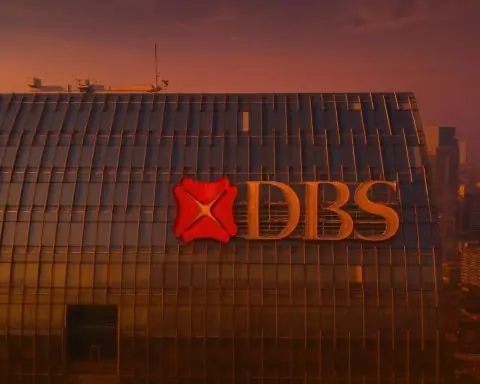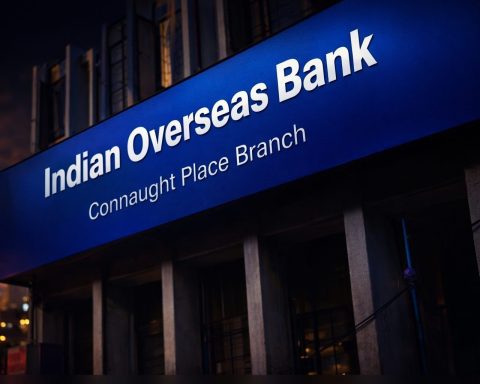Rolls-Royce Holdings plc (LSE: RR.) remains one of the FTSE 100’s most closely watched stocks today as investors digest fresh headlines on Emirates A350 orders, fast‑growing Indian power demand, nuclear small modular reactors (SMRs), and a new U.S. lawsuit – all against the backdrop of a still‑elevated share price and upbeat 2025 guidance.
- Share price: today’s London trading range for Rolls‑Royce is around 1,053–1,061.5p per share, according to real‑time data from Investing.com. [1]
- Guidance reiterated: earlier this month the group reaffirmed 2025 underlying operating profit of £3.1–3.2bn and free cash flow of £3.0–3.1bn, with large‑engine flying hours at 109% of 2019 levels. [2]
- Credit rating upgrade: Moody’s has lifted Rolls‑Royce from Baa2 to Baa1 with a positive outlook, citing strong performance, broad growth prospects and a more conservative balance‑sheet policy. [3]
- Analyst sentiment: RBC Capital Markets initiated coverage last week with an “outperform” rating and 1,275p price target, highlighting the wide‑body engine franchise and SMR optionality; other brokers remain broadly positive. [4]
- New headlines today: focus on India’s booming power‑systems market and ongoing Emirates‑linked optimism in civil aerospace, alongside attention on a wrongful‑death lawsuit in the U.S. Virgin Islands. [5]
Note: This article is for information only and does not constitute investment advice. Always do your own research or consult a regulated adviser.
1. Rolls-Royce share price today: strong but volatile after a stellar run
Rolls‑Royce’s equity story in 2025 has been dominated by a dramatic multi‑year turnaround in earnings, cash flow and leverage – and by a share price that has more than doubled year‑to‑date. Reuters reported earlier this month that the stock had gained enough to push the group’s market capitalisation to around £97bn, after airlines boosted flying hours and data‑centre orders piled up. [6]
According to data used by TechStock² in its 26 November market wrap, Rolls‑Royce shares were recently trading around 1,054p, about 12% below a late‑October peak of 1,181.5p, but still roughly 95% higher over the past 12 months. TechStock² Real‑time figures from Investing.com show today’s intraday range around 1,053–1,061.5p, suggesting the stock is consolidating near the £10.5 level as traders digest a heavy news flow. [7]
Analysts remain broadly constructive, even after the sharp rally and recent pullback:
- RBC Capital Markets launched coverage on 18 November with an “outperform” rating and 1,275p target, arguing that Rolls‑Royce’s wide‑body civil engine business – about 37% of sales – accounts for roughly 70% of its intrinsic value in a sum‑of‑the‑parts model. [8]
- RBC also points to a projected 2026 free‑cash‑flow yield of 4.4%, versus about 3.2% for peers, as evidence that the cash‑generation story still has room to run. [9]
- The Motley Fool’s Christopher Ruane, writing earlier this week, noted that the shares are down about 12% in a matter of weeks but questioned whether this represents the start of a sustained downtrend or simply a pause after outsized gains; he concluded the valuation “doesn’t look unjustifiable” given current business momentum. TechStock²+2Yahoo Finance+2
Balancing that optimism, short‑term traders have been quick to lock in profits on any sign of weakness. A recent note from TradersUnion highlighted that a bout of profit‑taking knocked the shares more than 5% lower in one session, even as the company pressed ahead with its £1bn share buyback, having already repurchased around £900m of stock by late November. [10]
2. Dubai Airshow – Emirates A350 orders keep civil aerospace in the spotlight
Much of the current Rolls‑Royce narrative still revolves around the Dubai Airshow 2025, where Middle Eastern carriers placed a string of wide‑body aircraft and engine orders that will underpin decades of high‑margin service revenue.
Key developments include:
- Emirates orders eight additional Airbus A350‑900s, worth around $3.4bn at list prices, all powered by Rolls‑Royce Trent XWB‑84 engines. [11]
- The UK government trumpeted these and other Dubai deals as supporting “thousands” of British jobs and reinforcing the country’s status as an aerospace exporter, specifically flagging the role of Rolls‑Royce engines on new Airbus wide‑body jets. [12]
- Etihad Airways chose Rolls‑Royce to power a fleet expansion with Airbus A330neo and A350 aircraft, using Trent 7000 and Trent XWB‑97 engines. [13]
- Air Europa signed a memorandum of understanding for up to 40 Airbus A350‑900s, also powered by Trent XWB‑84, reinforcing Rolls‑Royce’s already dominant position on this long‑haul platform. [14]
At the same time, Emirates and Rolls‑Royce announced that from 2027 the Dubai carrier will join the engine maker’s global Maintenance, Repair and Overhaul (MRO) network, gaining the rights to perform heavy work on its own Trent 900‑powered A380 fleet. [15] Industry outlet AviTrader noted that the agreement builds on a new memorandum of understanding and should lock in high‑value aftermarket work for Rolls‑Royce even as the A380 nears the latter stages of its commercial life. [16]
A fresh article on ABC Money, published today, describes the Emirates‑linked engine and service work as a “£3bn contract”, and claims the stock jumped about 6% on the news. [17] While that specific price move appears to reference older share‑price levels – current London trading is nearer 1,050p, not 297p – the story reinforces the broader point: investors increasingly see Dubai as a multi‑decade service‑revenue engine for Rolls‑Royce rather than just a one‑off order spike.
Not all Dubai headlines are unambiguously positive. Emirates president Sir Tim Clark this month reiterated that the airline has held back from ordering the larger A350‑1000 until Rolls‑Royce further improves Trent XWB‑97 durability in Gulf operating conditions, especially time‑on‑wing before major shop visits. [18] Management has been quick to stress that a £1bn engine‑durability investment programme and new blade technologies are already rolling through the fleet, but the comments underline the importance of execution in Civil Aerospace.
3. Fresh today: India’s power‑systems boom tilts business mix
The most clearly “new” operational headline on 27 November 2025 comes from India, where Construction World reports that Rolls‑Royce’s Power Systems division expects its non‑government business to overtake government contracts in the country by 2026–27. [19]
Key points from that report:
- Historically, the Indian power‑systems business was about 70% government and 30% non‑government, focused on the Navy, Army, servicing and mining, with some emergency backup for hospitals and critical infrastructure. [20]
- Rapid growth in data centres has shifted that mix towards 50:50 this year, with the company now targeting 60% non‑government / 40% government by 2026–27 as the overall market expands. [21]
- Growth drivers on the private side include:
- large data‑centre backup power contracts,
- gas engines for industrial applications, and
- uninterrupted power for semiconductor and electronics manufacturing. [22]
- Rolls‑Royce is supporting a nearly 170 MW data‑centre installation in Pune for a major global hyperscaler and expects more major contracts in 2026. [23]
- The group has relocated an entire factory from Germany to Pune, producing power‑generation and rail under‑floor engines for India and export markets including Germany, the US and the Middle East, with plans to double annual engine output within three years. [24]
This shift matters for the listed company because Power Systems is one of the three core profit pillars alongside Civil Aerospace and Defence. The trading update earlier this month highlighted “strong order intake and revenue growth” in Power Systems driven by data centres and backup generation, as well as testing of a new next‑generation engine aimed at the data‑centre market from 2028. [25]
Today’s India‑focused coverage suggests that this growth is increasingly global and not limited to Europe or North America – a useful diversification as airlines and defence ministries inevitably go through their own cycles.
4. Nuclear SMRs: from Wylfa to Prague
Nuclear small modular reactors remain a major part of the Rolls‑Royce long‑term equity story, and they are again in focus around today’s date.
Wylfa confirmed as the first UK SMR site
Earlier this month, UK prime minister Keir Starmer confirmed that Wylfa on the island of Anglesey (Ynys Môn) will host three Rolls‑Royce SMRs, with the government committing £2.5bn to the project as part of a wider push to reboot UK nuclear capacity. [26]
The Department for Energy Security and Net Zero previously selected Rolls‑Royce SMR as preferred bidder to deliver the country’s first SMRs, with public funding of “over £2.5bn” earmarked for the broader programme and a goal of connecting the first units to the grid in the mid‑2030s. [27]
Rolls‑Royce says a fleet of SMRs could:
- support an average of 8,000 highly skilled UK jobs per year,
- contribute around £54bn to the British economy over time, and
- unlock sizeable export opportunities, with Czech utility ČEZ and Sweden’s Vattenfall already exploring deployments. [28]
Prague supplier day – happening today
On the international front, Rolls‑Royce SMR is hosting a Supplier Technical Briefing in Prague today, 27 November 2025, bringing together its procurement team, Czech utility ČEZ and potential supply‑chain partners. [29]
The aim is to:
- deepen Czech industrial participation in future SMR builds,
- map capabilities across heavy engineering, nuclear‑grade manufacturing and civil construction, and
- accelerate the path towards deploying up to 3GW of SMR capacity in the Czech Republic, for which Rolls‑Royce was previously shortlisted. [30]
For investors, the Prague event is another small but concrete signal that the SMR opportunity is moving from slide decks towards tangible procurement discussions – even though revenues remain many years away.
5. Quantum computing and engine R&D: Xanadu collaboration hits milestone
Another theme driving sentiment this week is Rolls‑Royce’s move into quantum‑accelerated engineering simulations.
On 25 November, Canadian quantum‑computing specialist Xanadu, Rolls‑Royce and UK‑based Riverlane announced they had completed a collaborative project applying hybrid quantum‑classical methods to jet‑engine airflow simulations. [31]
According to the partners:
- By combining Xanadu’s PennyLane software and Catalyst compiler, Riverlane’s algorithms and a Rolls‑Royce industrial use case, the team managed to cut certain pre‑processing and prototyping runtimes from weeks to less than an hour. [32]
- The work focused on fault‑tolerant quantum algorithms relevant for the coming “error‑corrected” era of quantum hardware rather than today’s small‑scale devices. TechStock²+1
For now, the financial impact is negligible. But if quantum‑accelerated simulations let Rolls‑Royce design and optimise engines more quickly – or explore novel architectures that would be too computationally expensive with classical tools – the collaboration could strengthen its competitive moat in both civil and defence aerospace over the next decade.
6. Power Systems sustainability: Series 2000 and low‑carbon fuels
Complementing the Indian growth story, Rolls‑Royce this week spotlighted its mtu Series 2000 engines in a corporate story titled “Series 2000 – powering progress with purpose”, published on 25 November and picked up by MarketScreener today. [33]
The company emphasises that:
- Series 2000 engines provide high‑density power for yachts, commercial vessels, construction and mining equipment, rail and distributed power. [34]
- They are increasingly able to run on sustainable drop‑in fuels such as hydrotreated vegetable oil (HVO), supporting customers’ decarbonisation journeys without requiring wholesale replacement of existing fleets. [35]
This complements the trading update’s note that Power Systems has successfully tested a new, more efficient generator set for data‑centre backup power, as well as the first 100% methanol high‑speed marine engine, marking “a major milestone” in its CO₂‑neutral propulsion roadmap. [36]
Put together, these developments underline why Moody’s now expects Rolls‑Royce’s civil aerospace segment to generate around £2bn of profit by 2025 – roughly two‑thirds of group earnings – while Defence and Power Systems also see structural growth from rearmament and data‑centre demand. [37]
7. Legal overhang: new wrongful‑death lawsuit in the U.S. Virgin Islands
Balancing the positive headlines, investors also have to consider litigation risk.
On 26 November, the tech and market‑news site TechStock² drew attention to a wrongful‑death lawsuit filed against Rolls‑Royce Corporation and others over a 2021 helicopter crash near Botany Bay, St. Thomas, U.S. Virgin Islands, which killed pilot Maria Rodriguez and three passengers. TechStock²+2The Virgin Islands Consortium+2
According to reporting by The Virgin Islands Consortium and court documents:
- Witnesses saw a large cloud of black smoke before the helicopter lost engine noise and crashed. [38]
- Toxicology tests found no alcohol or non‑prescription drugs in the pilot’s system, and the complaint states there is “no evidence that pilot error contributed to the crash.” [39]
- A preliminary investigation by operator Caribbean Buzz concluded that the aircraft went down after a “contained failure within the compressor section of the helicopter’s engine.” [40]
- The Rolls‑Royce engine in question was installed in 1981 and overhauled in 2008–09. The suit alleges that newer compressor‑wheel designs, said to be less prone to casting defects, were available two years before the overhaul but that Rolls‑Royce did not recommend replacing older wheels with the updated version until 2023. [41]
The case, brought by Rodriguez’s widower Nicolas Van Heurck, seeks damages from Rolls‑Royce, Boeing Distribution, Aviall and others for alleged negligence in design, servicing and inspection. [42]
Given the age of the engine and the limited number of similar incidents, analysts currently see the main risk as reputational rather than financially existential. But for a company that increasingly pitches itself on reliability and safety – especially in defence and nuclear – the outcome will be watched closely.
8. Trading update recap: 2025 guidance holds firm
Underlying all of today’s headlines is the 13 November trading update, which set the tone for the current phase of the turnaround. [43]
Highlights include:
- Guidance maintained for 2025 underlying operating profit of £3.1–3.2bn and free cash flow of £3.0–3.1bn, despite ongoing supply‑chain challenges.
- Civil Aerospace: large‑engine flying hours for the first ten months were up 8% year‑on‑year, reaching 109% of 2019 levels; significant large‑engine orders have been secured from IndiGo, Malaysia Airlines and Avolon, with strong demand for the Trent XWB‑97‑powered Airbus A350F, especially in Greater China and Asia‑Pacific. [44]
- Defence: demand remains robust, with progress on the Global Combat Air Programme (GCAP), successful testing of advanced combustors using additive manufacturing, and an export agreement for 20 Eurofighter Typhoon aircraft to Türkiye, powered by EJ200 engines. [45]
- Power Systems: strong order intake for power generation and backup systems, development of a new high‑speed data‑centre engine due to enter service in 2028, and successful testing of the first 100% methanol high‑speed marine engine. [46]
Combined with the rating upgrade from Moody’s and newly bullish coverage from RBC and others, the update has given management and investors confidence that the transformation launched by CEO Tufan Erginbilgic is on track.
9. What investors are watching next
Looking beyond today’s headlines, key signposts for Rolls‑Royce watchers include:
- Execution on Dubai Airshow deals – whether Emirates, Etihad and Air Europa orders translate into sustained cash‑generating service revenue and improved engine durability metrics. [47]
- SMR milestones – progress on regulatory approvals, site development at Wylfa, and international opportunities following today’s Prague supplier day. [48]
- Power Systems scaling – especially in India’s data‑centre and semiconductor sectors, where today’s reporting suggests a shift towards higher‑margin private contracts and greater localisation of manufacturing. [49]
- Legal and safety outcomes – including the U.S. Virgin Islands helicopter case and ongoing work to improve time‑on‑wing for Trent engines, which directly impacts airline relationships and aftermarket economics. The National+3TechStock²+3The Virgin Islands Consortium+3
- Capital allocation – completion of the £1bn buyback, potential dividend decisions once the balance‑sheet targets are met, and any fresh guidance at upcoming investor conferences or the full‑year results expected in February 2026. [50]
For now, 27 November 2025 finds Rolls‑Royce at an intriguing juncture: a business delivering on ambitious financial targets, winning marquee orders and exploring cutting‑edge technologies, yet still facing legal, technical and macro‑economic risks that could jolt a share price already priced for continued success.
References
1. www.investing.com, 2. www.rolls-royce.com, 3. www.investing.com, 4. www.investing.com, 5. www.constructionworld.in, 6. www.reuters.com, 7. www.investing.com, 8. www.investing.com, 9. www.investing.com, 10. tradersunion.com, 11. www.eplaneai.com, 12. www.gov.uk, 13. www.marketscreener.com, 14. www.marketscreener.com, 15. www.rolls-royce.com, 16. avitrader.com, 17. www.abcmoney.co.uk, 18. www.thenationalnews.com, 19. www.constructionworld.in, 20. www.constructionworld.in, 21. www.constructionworld.in, 22. www.constructionworld.in, 23. www.constructionworld.in, 24. www.constructionworld.in, 25. www.rolls-royce.com, 26. www.theguardian.com, 27. www.gov.uk, 28. www.rolls-royce.com, 29. www.rolls-royce-smr.com, 30. www.rolls-royce.com, 31. www.xanadu.ai, 32. www.xanadu.ai, 33. www.rolls-royce.com, 34. www.rolls-royce.com, 35. www.marketscreener.com, 36. www.rolls-royce.com, 37. www.linkedin.com, 38. viconsortium.com, 39. viconsortium.com, 40. viconsortium.com, 41. viconsortium.com, 42. viconsortium.com, 43. www.rolls-royce.com, 44. www.rolls-royce.com, 45. www.rolls-royce.com, 46. www.rolls-royce.com, 47. www.marketscreener.com, 48. www.gov.uk, 49. www.constructionworld.in, 50. tradersunion.com
